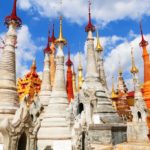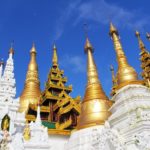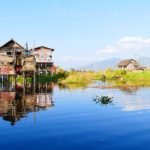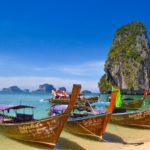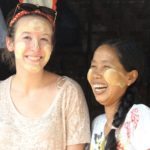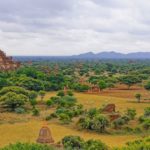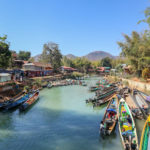36 Hours in Yangon, Myanmar
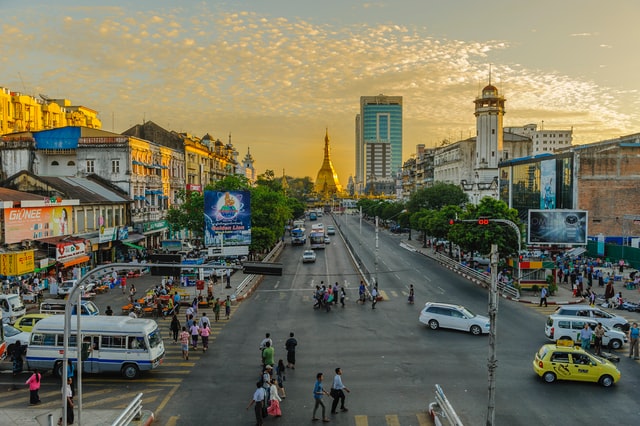
My nerves tingled with excitement as the plane descended into the city, for my 36 hours in Yangon. Adventure awaited. The steady influx of visitors, international corporations, and investments in recent years has heralded colossal transformations in Myanmar. Ruled by a repressive military dictatorship, Myanmar was isolated from the world for almost five decades. With the advent of a civilian government in 2010, tourism has steadily increased.
36 Hours in Yangon, Myanmar
Afternoon Arrival
Immediately upon exiting the airport, the sweltering heat assailed my senses. The warm breeze filtering through the open windows slowly reinvigorated me. As the taxi leisurely wended its way through the bustling streets, the odor from exhaust pipes mingled with the fragrance of frangipani and jasmine. Gradually, the newer stores, modern homes, and wider roads gave way to denser congestion, older buildings, and widespread street vendors as we approached downtown.
Evening
By the time I deposited my bags at the guesthouse, it was already late afternoon. Sunset at the docks on the Yangon River was the perfect way to watch the city unwind. On the horizon, orange, gold, and red hues merged with the delicate tendrils of blue-gray clouds, as motorized dinghies transported home-bound workers across the river to Dala. Four boys living and working on a larger boat bathed on the docks. On the narrow dusty street, another group of boys energetically kicked a rattan soccer ball.
The city hummed with energy as darkness descended. Stalls arrayed with bananas, avocados, jackfruit, and dragonfruit represented a few of the fruits for sale. Men and women in colorful longyis were seated at small tables set out by food vendors. Omnipresent were men with rotting teeth stained red from chewing the betel nut.
Walking was often hazardous as the crumbling rickety sidewalks give way to the sewer system just below. The rancid odors emanating from the sewers, along with the putrid stench of the durian fruit, combined with the aromas of fish, pork, and beef sizzling in hot oil. Pausing by a woman with twenty or so small caged birds, our interpreter explained that for a small fee (about $1.50) we could release three of these birds while earning merit in the process. Perched on my fingers one at a time, these gentle creatures flapped their wings, and gently glided upward as I released my grip, and softly intoning a prayer.
Dinner
Dining at Shan Yoe Yar restaurant was a wonderful finale to the day’s activities. Formerly a 100-year old wooden mansion, this upscale restaurant sports a plethora of healthy, authentic Shan-style fare that appeals to vegetarians and carnivores alike. A popular choice for tourists and locals, reservations are advised. The eggplant curry was like nectar to the gods.
Day Two: Early Morning
Waking up before dawn to check out the morning markets, we meandered through the crowded streets of downtown Yangon. The aromas of fresh fish and noodles permeated the air. Despite the early hour, business was bustling. Normally around large crowds I am ultra-aware of my surroundings, and cautious of my belongings. Strolling through Yangon’s neighborhood, we felt completely safe.
Skipping a western-style breakfast at the guesthouse, we headed for (999) Shan Noodle for a traditional breakfast. Trendy with locals, this small, clean restaurant offers a hearty meal for next to nothing. The welcoming staff provided great service, and it’s a wonderful venue to people-watch.
Mid-Morning
Riding the rickety old circle train, which loops from the center of Yangon through its outskirts, was a fun way to glimpse traditional Myanmar life beyond the commercial center of the city. As the train slowly rattles and chugs along, the scenery gradually transforms from the gray concrete jungle to verdant green agricultural fields, to dilapidated wooden and bamboo huts in rustic villages, and back again to denser populated neighborhoods. Locals hop on and off at various stops, sometimes carrying produce or chickens to sell at the market towns. The hard, unadorned seats and jarring ride may be uncomfortable for the full three hours, so we exited in Okkalapa. Away from hordes of tourists, we wandered through the Mae La Mu Pagoda, and enjoyed a drink at a local tea house.
Late Afternoon
The highlight of my time in Yangon was a visit to Shwedagon Pagoda. High on a hill, the pagoda can be seen from almost anywhere in the city. Truthfully, I’m not that into pagodas and wasn’t expecting much. Nonetheless, immediately upon entering Shwedagon I was rendered speechless. Awe-inspiring, breathtaking… these are merely words that cannot adequately describe the sensations that coursed through me. Like a kid in a candy store, I didn’t know where to focus my attention.
The scent of burning candles and incense permeated the atmosphere. Red-robed monks and female monks clad in pink were immersed in their prayers. Young children dressed in their finest longyis were being instructed in Buddhist practices. Interspersed with periodic reverberation of a bell, worshipers lit candles and offered flowers and incense. They poured water on an image of Buddha while proffering a prayer and a wish. Others knelt in supplication or meditation. 2500 years old, this is the holiest site for Burmese Buddhists. Encased in hundreds of gold plates, the top stupa is encrusted with an astounding 4531 diamonds, culminating in a 72-carat diamond. Many of the Burmese follow practices that originated in Hindu astrology. Their rituals and architecture reflect this tradition.
Dinner
A visit to Yangon is not complete without a meal at the House of Memories. Filled with history, it is the 100-year old colonial headquarters of General Aung San, who fought for Burmese independence.
Thirty-six hours in Yangon may not be enough time to experience everything that this city offers, but it is enough to get a taste before moving on to other parts of the country. Enjoy this city, which is a treat for the senses.
Photo for 36 Hours in Yangon, Myanmar by Unsplash.

